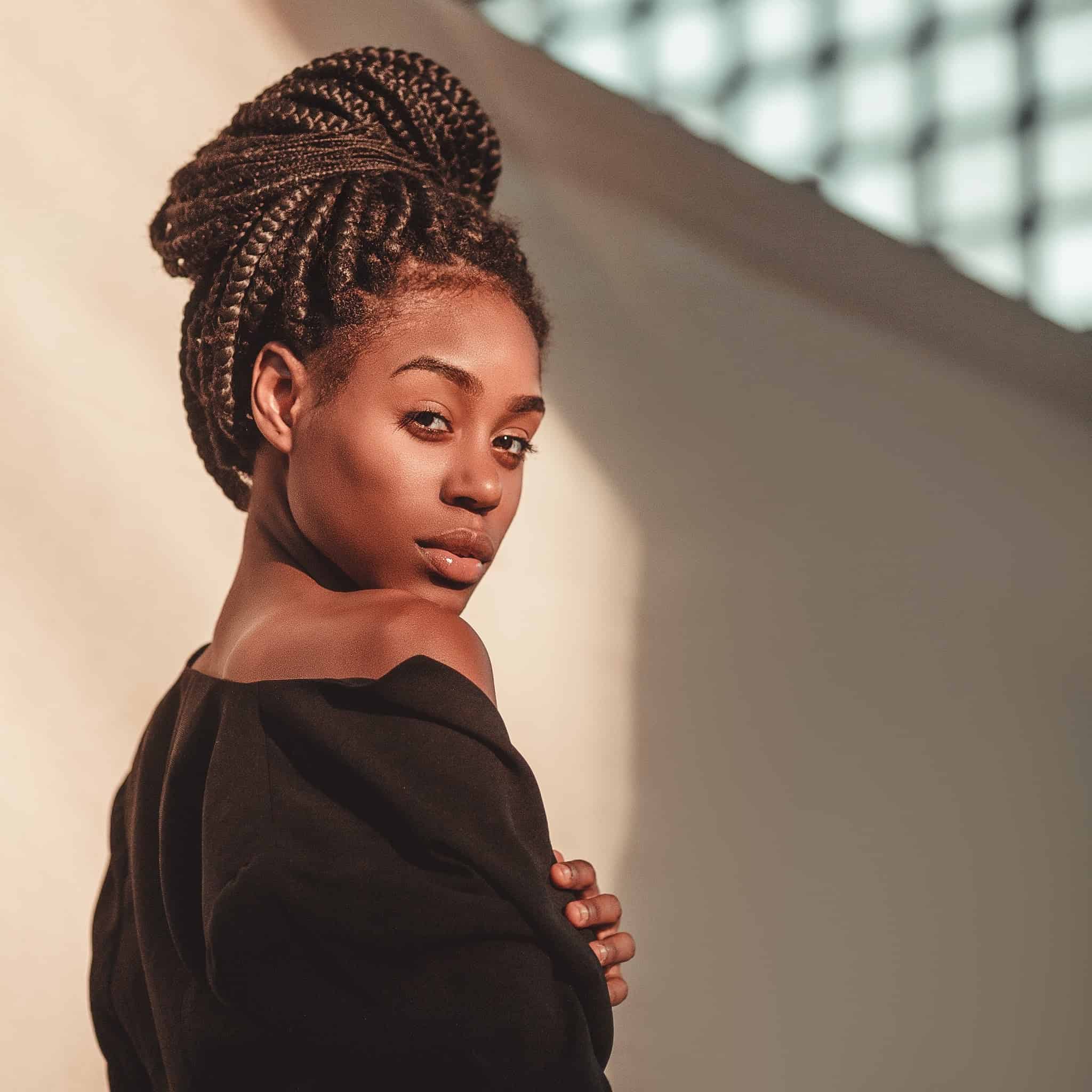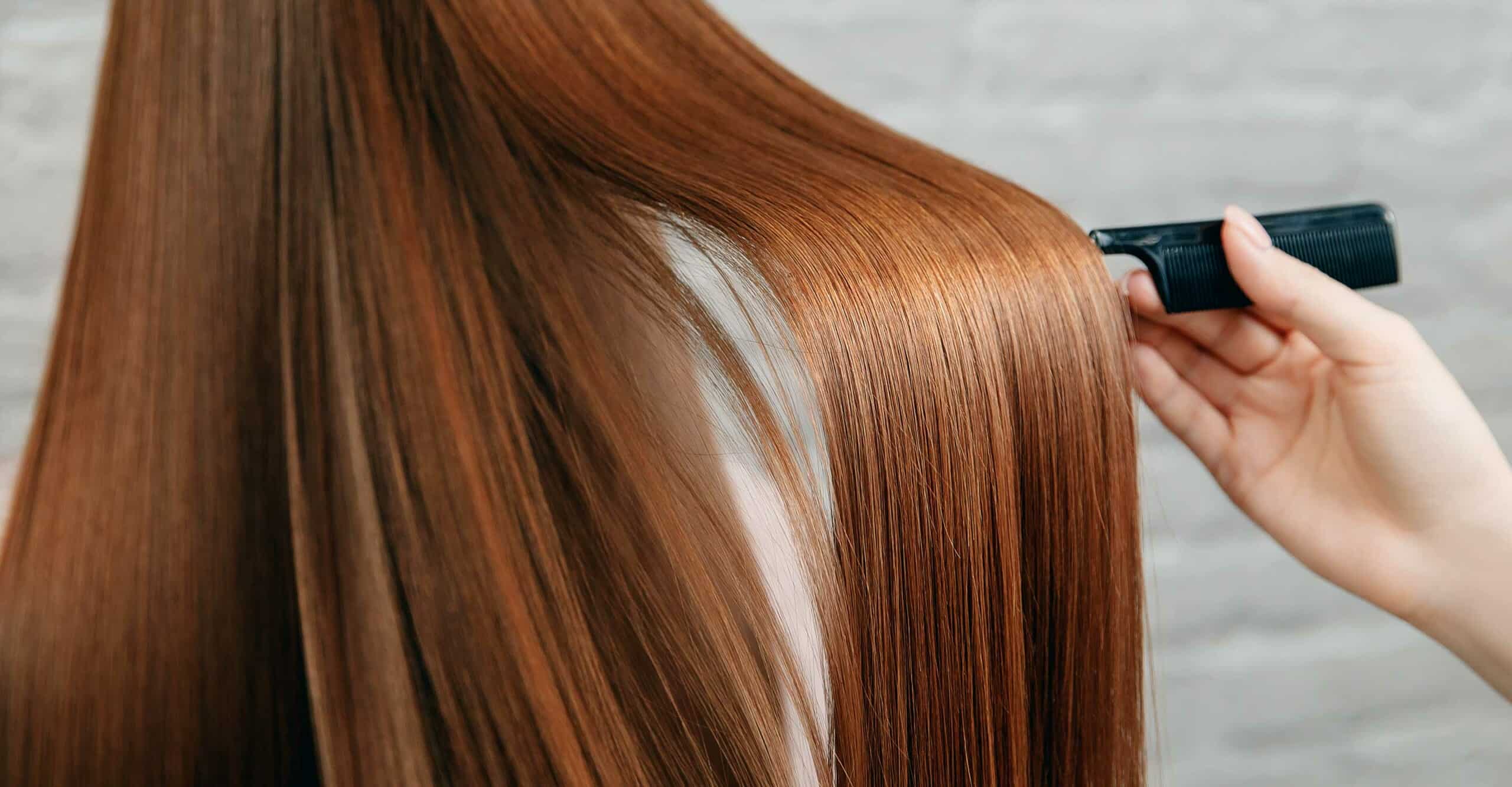How To Do the Curly Girl Method: A Guide for Every Curl and Coil

Many curly-haired people spent the early 2000s fighting against their curls because they didn’t know how to take care of them, and pin-straight strands were “in.” Contrary to those former beliefs, curly hair isn’t difficult — it just takes a bit of moisture and TLC to revive and accentuate your beautiful natural hair.
Despite its name, the curly girl method is for people of all genders. Curly-haired people everywhere can follow Lorraine Massey’s formula to bring their curls back to life and fall in love with their hair. When you’re ready to start your hair journey, give the curly girl method a try and visit your local salon for an expert curly haircut.
What is the curly girl method?
The curly girl method is a system that outlines basic care tips for curly hair. Lorraine Massey, inventor of the Deva cut, came up with this method in her 2011 book “Curly Girl: The Handbook.” This hair care system focuses on rebuilding hair health and addresses common concerns about curly hair, including:
- Frizz from damage and incorrect styling
- Breakage from overusing hot tools
- Lack of definition from dry hair
- Lack of volume from product buildup
By following Massey’s basic rules for hair care, you can unlock defined curls. While some people have quite extensive curl routines, you can mix and match products and strategies until you find what works for you.
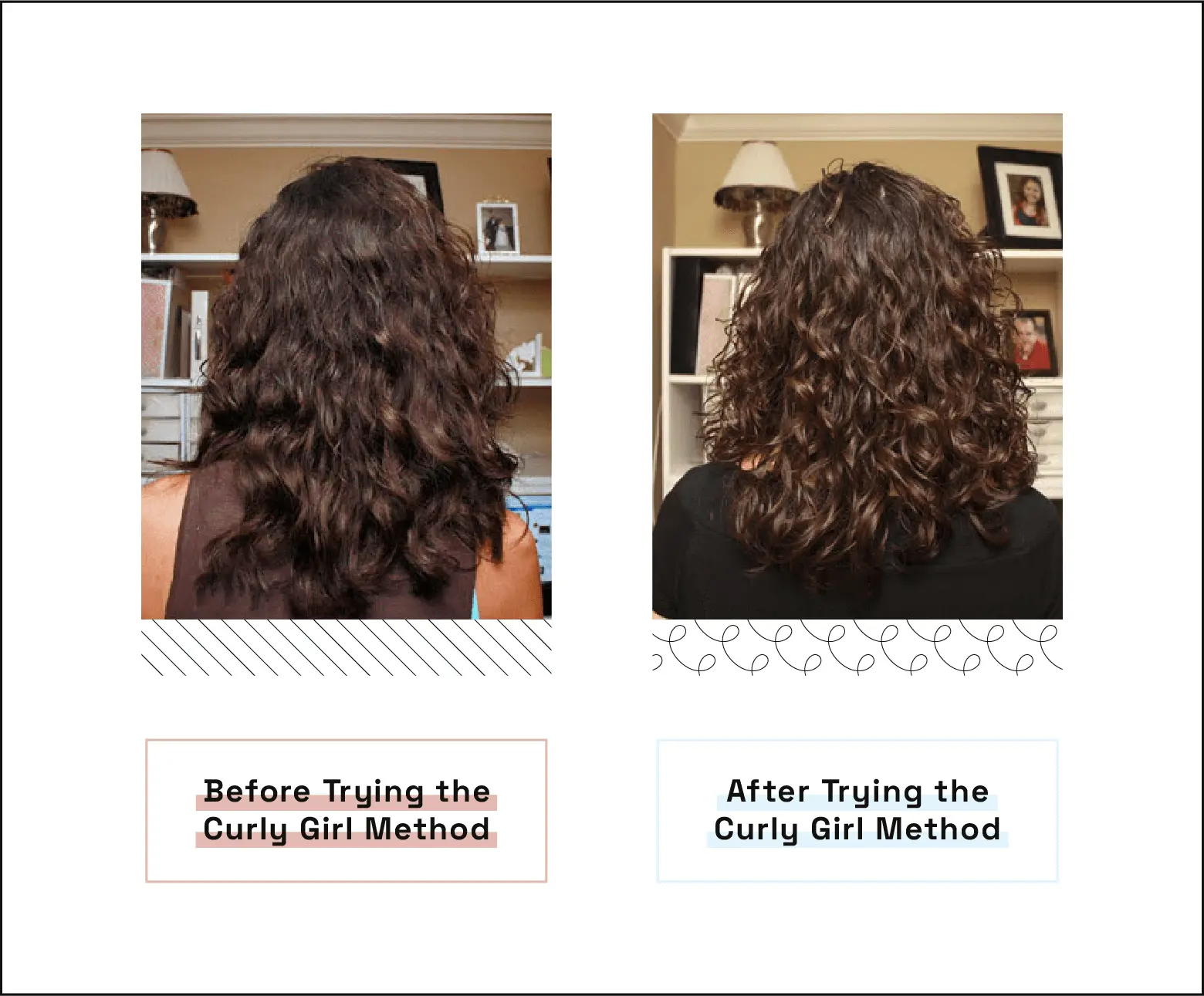
Step 1: Use a gentle co-wash or shampoo
Wavy hair tip: Waves will get oily quicker. Plan a wash day once your roots go flat.
Curly hair tip: Use a curl revitalizer to manage your hair between washes.
Coily hair tip: Wait until you need a reset to wash your hair again. You can wet your hair and restyle it before it gets too oily.
When you’re dealing with frizz and a lack of definition with your curls, this might be a sign that your hair is dry. Traditional shampoos contain sulfates, which cause that lathering effect we all love. But sulfates can be too harsh. Especially on curly hair, it’s good to have a bit of your natural oil to keep your hair hydrated.
To start, double cleanse your hair in the shower. Use your normal shampoo first, then your new, sulfate-free shampoo. Going forward, you’ll only wash with the sulfate-free shampoo. Another popular choice, especially for textured hair, is co-wash. Co-wash is a hair conditioner with some cleansing properties that is very gentle on your hair.
Check your other styling products and remove ones with silicones in the ingredients, too, as silicones coat your hair and can be difficult to wash away. A common silicone found in hair care is dimethicone. Overusing dry shampoo can also cause product buildup and irritate your scalp.
If you still feel like your hair has product buildup, you can use a clarifying shampoo once in a while and follow up with a deep conditioner to restore your curls. Some people opt to keep a favorite product in their routine even if it contains silicones. In this case, consider using a clarifying shampoo every four or so washes to remove the silicones from your hair.
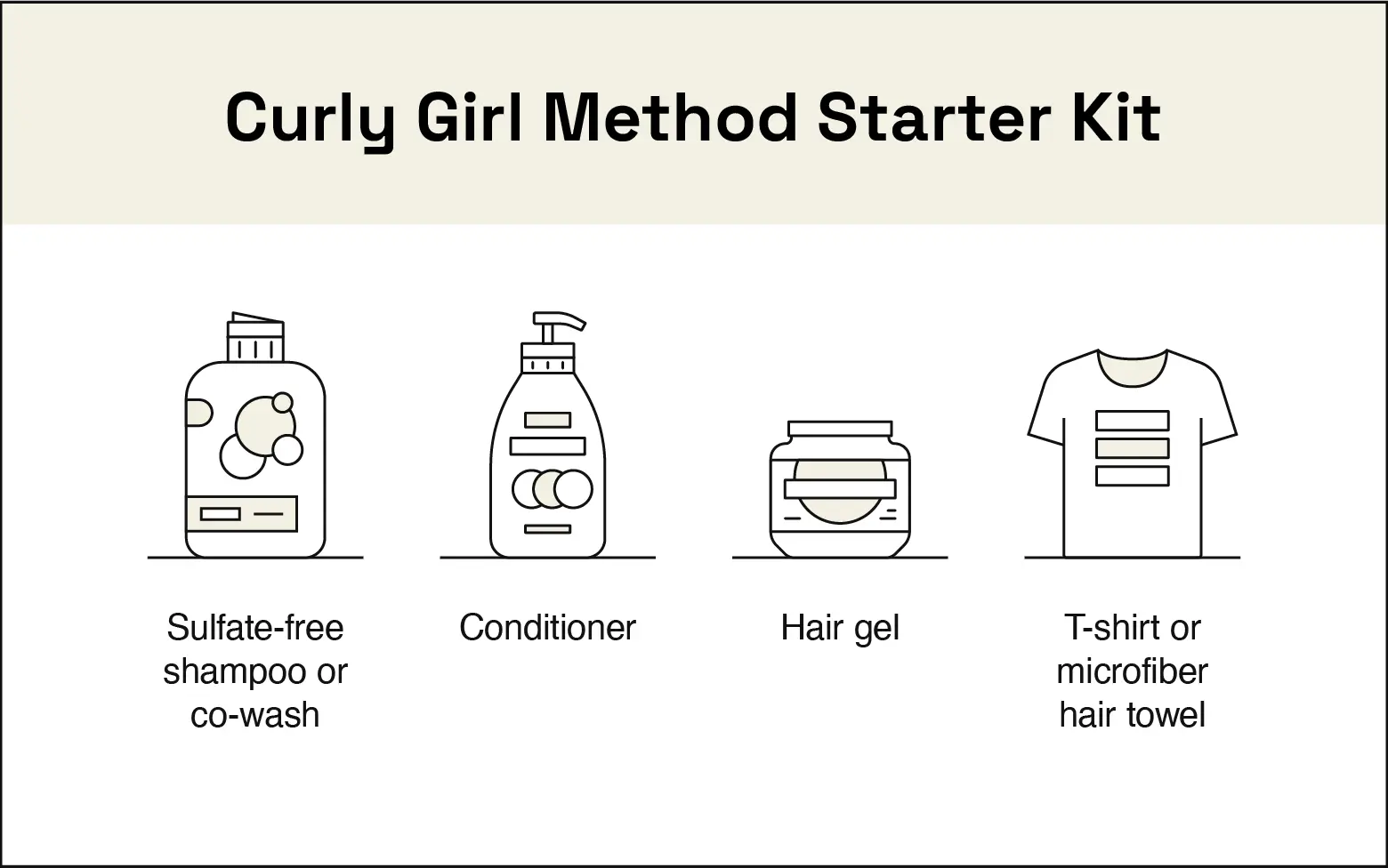
Step 2: Condition and moisturize your hair
Wavy hair tip: Rinse your hair completely, then add a small amount of conditioner back to your strands right before leaving the shower to avoid greasy hair.
Curly hair tip: Rinse your hair in the shower but leave enough slip for easy detangling.
Coily hair tip: Use a deep conditioning mask each time you wash to lock in hydration continually.
When it comes to conditioning your curls, more is more. Take at least a handful of conditioner and work it down the length of your hair. Once your hair is saturated with conditioner, then you can use your fingers, a wide tooth comb, or a brush meant for wet hair to gently detangle.
Many people with curly hair like to “squish to condish.” With this strategy, you scrunch conditioner into your wet hair to help form curls. Not sure you’re doing it right? Try this:
- Bring a large bowl into the shower with you.
- Fill the bowl with water.
- Liberally apply conditioner throughout your hair.
- Flip your head over and lower your hair into the water.
- Scrunch the water out of your hair.
- Repeat until your hair feels silky and makes a squelching noise when you scrunch it.
It’s important to note that you shouldn’t wash out all your conditioner if you have curly hair. Leaving a bit of conditioner in your hair will help keep it conditioned and shiny.
You can also use a deep conditioning mask or treatment weekly to add extra moisture to your routine. Some curls also do well with a protein treatment every once in a while, though low-porosity types might find that protein masks make their hair feel brittle.

Step 3: Gently detangle and define your curls
Wavy hair tip: Use a brush made for wet hair with synthetic bristles.
Curly hair tip: Use a wide tooth comb to detangle without breaking up your curls.
Coily hair tip: Use your fingers for the most control when detangling your strands.
People with curly hair should always detangle their hair when it’s wet and conditioned. If you brush your curls dry, you’ll lose that definition we’re working toward! However, wet hair is very prone to breakage.
Conditioner gives wet hair enough slip to detangle without pulling on your strands, but try to go slow. Start by detangling the last couple inches of your hair and slowly work your way to your roots to minimize breakage.
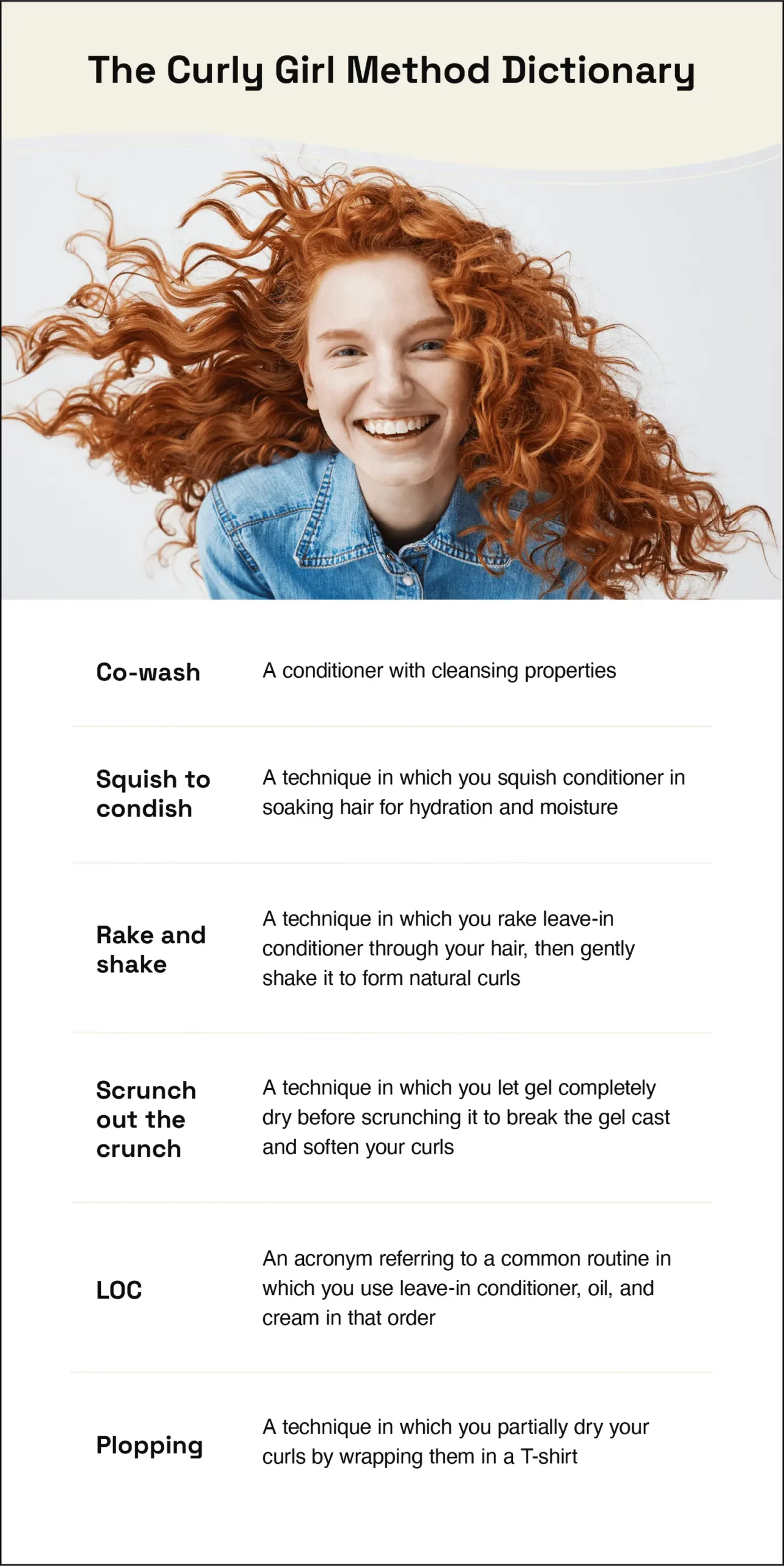
Step 4: Apply styling products
Wavy hair tip: Use a mousse for weightless volume.
Curly hair tip: Use a gel for a soft hold and healthy shine.
Coily hair tip: Use cream for hydration and care.
The curly girl method highly recommends starting with gel to style your hair. Although it may bring up memories of rock-hard hairstyles from adolescence, the good news is that gel has come a long way. Now, you can get soft, bouncy hair with hold that lasts all day.
The key step you were missing as a kid? It’s called “scrunch the crunch.” Here’s how you can try it:
- Apply gel to wet hair in the shower.
- Use your fingers or a Denman brush to sculpt your hair into curls.
- Gently scrunch curls with a cotton T-shirt and let the product dry completely.
- Use your hands to scrunch your curls all over your head until your hair feels soft.
For people with coily hair, the leave-in, oil, and cream (LOC) method is a popular rule of thumb for choosing styling products. The LOC method is simple — you just apply a leave-in conditioner, hair oil, and hair cream in that order. Some people prefer LCO, where you use hair cream and then seal it with an oil. Experiment both ways to see which works best for your hair.
If you want to try the LOC or LCO method, conduct a mix test with your products ahead of time. Mix a bit of your favorite leave-in conditioner, oil, and cream in the palm of your hand. If they mix together easily, they’re more likely to work well together in your hair. If the mixture separates, you might want to try a new combination of products.
Step 5: Air dry or diffuse your hair
Wavy hair tip: Use your fingers or a Denman brush to shape wet hair into curls before you dry it.
Curly hair tip: Flip your hair upside down while drying or plop it for extra volume at the root.
Coily hair tip: Take extra care to avoid heat to preserve your fragile curls, unless your hair type doesn’t dry on its own.
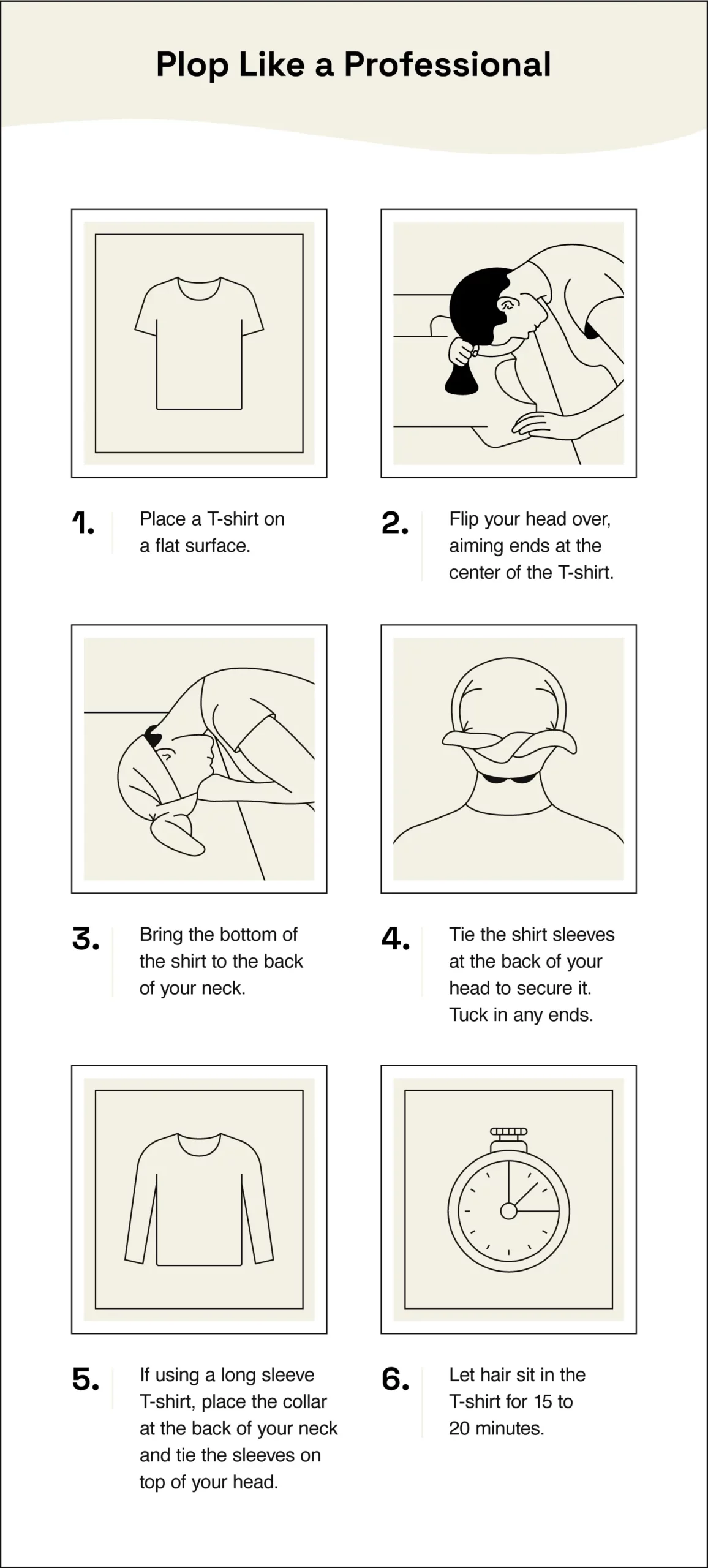
According to Massey, curly hair types should avoid heat styling as much as possible because curly hair is already prone to breakage, and it’s very easy to damage your hair. That’s why it’s extra important for curly-haired people to use a heat protectant when they’re using hot tools.
However, there’s no one-size-fits-all care routine, and everyone’s ideal hair routine is slightly different. Many people with curly hair enjoy diffusing their hair dry or hitting their roots with some air to lock in extra volume.
It sounds counterintuitive, but consider turning up the temperature on your hair dryer. Many of us were warned to keep it as cool as possible, but prolonged low-heat exposure can be as damaging as shorter exposure to high heat. As long as your hair isn’t burning and you use heat protectant, you should be good to go. Finish off your styling with a shot of cool air to lock your hard work in place.
Do’s and don’ts of the curly girl method
Now that you have a basic understanding of the curly girl method, let’s talk through some common misconceptions:
Do:
- Use styling products while your hair is soaking wet.
- Use protein treatments if you color your hair.
- Sleep in a bonnet or silk scarf wrap to protect your hair.
- Use high heat and low power when blow-drying your hair.
- Use curl revitalizer or spray diluted conditioner to revive second-day curls.
- Get a haircut from a stylist who specializes in curly hair types.
- Check if new hair products are curly girl-approved.
Don’t:
- Brush your hair when it’s dry.
- Use hairbrushes with natural bristles.
- Touch your hair while you’re waiting for it to dry.
- Rub your hair dry or use a bath towel on it.
- Switch your shampoo if you use a medicated formula.
- Wash your hair with hot water.
Curly girl method FAQs
The curly girl method has just four stages:
1. Cleanse
2. Condition
3. Style
4. Dry
There can be variations between how much effort you put into each stage. For example, you might want to have a simple wash routine but take extra time to style and dry. It’s all about what your hair responds to best and creating a routine that you can be consistent with.
The curly girl method won’t change your natural hair pattern. However, there are many cases where people with straight, frizzy hair try the curly girl method and discover that their hair care routines made their hair look straighter than it actually is.
Damaged curls can look frizzy, flattened, and limp. If you think your straight hair might actually have curls that need some extra care, give the curly girl method a try for a couple of weeks and see if it works for you.
Most curly-haired people agree that you should try a curly girl routine for at least a couple of weeks. Unless you’re experiencing scalp irritation or your hair is getting drier, give your new routine some time to kick in.
Some people discover that their hair looks oilier the first couple of washes on the curly girl method. This is a response to the extra moisture in your routine, but your scalp should adjust in a couple of weeks. If not, try tweaking how you apply your products or swap them out one at a time until you find what works best for you.
A basic curly hair routine uses just shampoo, conditioner, and gel. While hair gel doesn’t work for everyone, most people find success with it. If you decide to use a diffuser to dry your hair, you should also add a heat protectant to your routine. When you’d like to expand your hair care, you can integrate a detangler, leave-in conditioner, cream, or oil.
The curly girl method is a great place to start with your curly hair routine because it helps create a foundation where you can learn more about what works for your hair. Looking for more expert tips? Reach out to a hairstylist near you for recommendations to help you style your new look.
